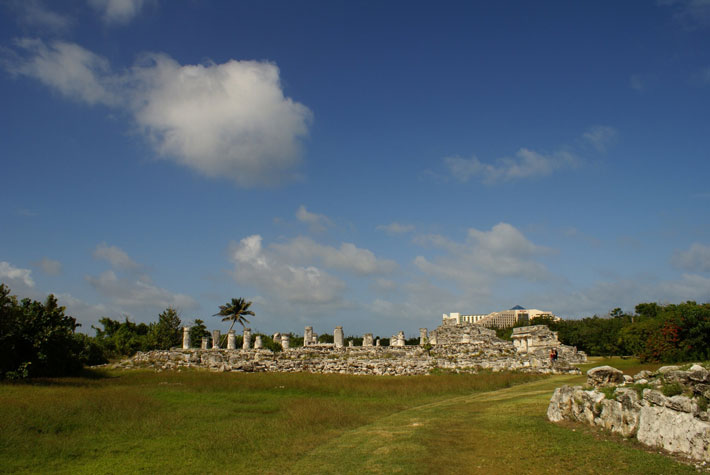 MÉRIDA, MEXICO—A study of the remains of 50 people who were buried in two Maya cemeteries on Cancun Island between A.D. 1200 and 1500 suggests that individuals who were born in central Mexico, Belize, and the Peten region of Guatemala integrated into the local culture on the east coast of the Yucatán Peninsula, according to a statement released by the Public Library of Science. The nonlocal individuals were identified through the analysis of strontium isotopes in their teeth. Meanwhile, analysis of carbon isotopes showed that the migrants consumed a diet similar to that eaten by the locals. Both groups were also buried in the same manner. Andrea Cucina of the Autonomous University of Yucatán and her colleagues further explained that the remains of the nonlocals included the remains of adults and children, suggesting that whole families may have been on the move. “People may have relocated for similar reasons as they do today—for economic, environmental, political, or kinship considerations,” she said. Read the original scholarly article about this research in PLOS ONE. To read about the migration of ancient populations to the Yucatán, go to "The Great Maize Migration."
MÉRIDA, MEXICO—A study of the remains of 50 people who were buried in two Maya cemeteries on Cancun Island between A.D. 1200 and 1500 suggests that individuals who were born in central Mexico, Belize, and the Peten region of Guatemala integrated into the local culture on the east coast of the Yucatán Peninsula, according to a statement released by the Public Library of Science. The nonlocal individuals were identified through the analysis of strontium isotopes in their teeth. Meanwhile, analysis of carbon isotopes showed that the migrants consumed a diet similar to that eaten by the locals. Both groups were also buried in the same manner. Andrea Cucina of the Autonomous University of Yucatán and her colleagues further explained that the remains of the nonlocals included the remains of adults and children, suggesting that whole families may have been on the move. “People may have relocated for similar reasons as they do today—for economic, environmental, political, or kinship considerations,” she said. Read the original scholarly article about this research in PLOS ONE. To read about the migration of ancient populations to the Yucatán, go to "The Great Maize Migration."
Remains of Late Postclassic Maya Migrants Analyzed
